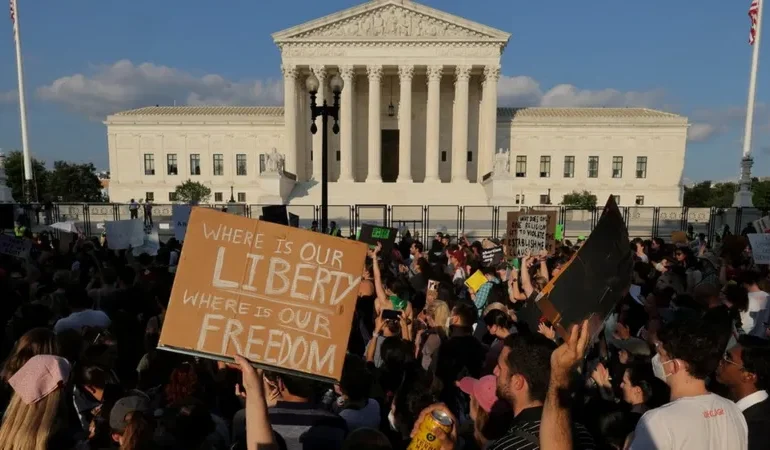
How the US Supreme Court is Reshaping America
In just 10 days, America has seen dramatic changes. Major decisions affecting everything from environmental policy to abortion rights have been handed down—not by the president or Congress, but by the Supreme Court. Although the Democrats control the White House and both houses of Congress, they lack the votes to pass much of their agenda. Instead, the Supreme Court, through a series of contentious and momentous rulings, is steering the country in a direction quite different from President Joe Biden’s vision.
The overturning of Roe v. Wade has sparked outrage among pro-choice advocates and celebration among anti-abortion activists who have fought for nearly 50 years to reach this point. Far from settling the matter, the Court’s decision has set the stage for ongoing legal battles across the country, ensuring that the fight over abortion rights will continue for years to come.
While the abortion ruling has garnered the most attention, other Supreme Court decisions have had significant global implications. The Court’s final decision of the term has made it nearly impossible for the US to implement meaningful environmental policies. By ruling that the Environmental Protection Agency cannot impose limits on carbon emissions without new legislation from Congress, the Court has hindered President Biden’s efforts to combat climate change—a key pledge of his administration.
This clash between the Supreme Court and the president is not an isolated incident. Recently, President Biden signed into law a historic gun-control bill, the first of its kind in 30 years, prompted by the tragic massacre of 19 children in Uvalde, Texas. While the bill represents a rare moment of bipartisan agreement, the Supreme Court simultaneously issued a ruling that overturned a New York gun regulation requiring permits to carry guns outside the home. This decision significantly limits states’ power to regulate gun ownership, dampening the impact of the new federal gun-control law.
As a result of these controversial rulings, the Supreme Court, intended to be the most impartial and least partisan branch of government, now appears highly political. Polls indicate that the Court is out of step with public opinion: two-thirds of Americans did not want to see abortion rights entirely removed, and around 60% favour stricter gun control measures. Public trust in the Supreme Court is waning, with recent polls showing only a quarter of Americans have “a great deal” or “quite a lot of confidence” in the institution.
Justice Sonia Sotomayor highlighted this issue when the Court first heard arguments on the abortion case, questioning whether the institution would survive the public perception that its decisions are merely political acts. She was among the three liberal justices who dissented on the abortion ruling, warning that it could endanger other rights, such as same-sex marriage and access to contraception.
With six conservative justices—three appointed by former President Donald Trump—outnumbering the three liberal justices, the Supreme Court is poised to tackle more controversial issues in the upcoming term, including voting rights and discrimination against LGBTQ+ individuals. Key cases include Moore v. Harper, which addresses state legislatures’ power over elections, and 303 Creative LLC v. Elenis, which examines whether a website designer can be compelled to create wedding websites for same-sex couples. The Court will also hear cases challenging affirmative action in college admissions.
The Court’s recent decisions and the upcoming controversial cases continue to polarise American society. Heightened security measures around the Supreme Court building, including eight-foot-high barriers, reflect the intense reactions these rulings have provoked. Meanwhile, as Americans were learning about the Court’s decisions on abortion, environmental protections, and gun rights, they were also following the January 6 committee hearings, which detailed how a sitting president urged an armed crowd to march to the US Capitol.
As Americans return from Independence Day celebrations, some may question whether the republic today functions as the founding fathers intended. This reflection comes amidst a backdrop of significant legal and political shifts that are reshaping the nation.Corrections (October 11, 2022): This article has been updated to clarify that the January 6 committee heard testimony from ex-aide Cassidy Hutchinson, who did not explicitly say that the crowd was urged to “storm” the Capitol. The article now accurately reflects her testimony.






